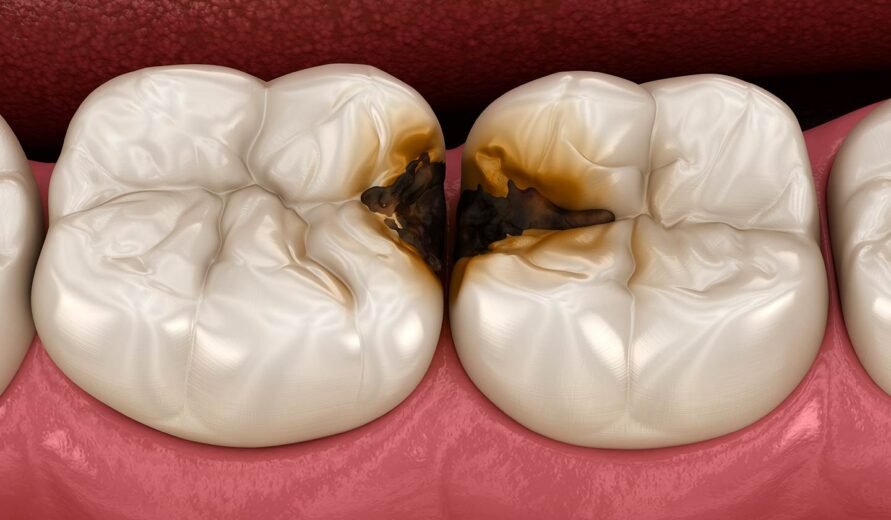A cavity is a small hole that forms in your tooth due to tooth decay. This happens when acids produced by bacteria in your mouth break down the tooth’s hard outer layer called enamel. If left untreated, cavities can get deeper and affect the inner parts of the tooth, leading to pain and infection. The good news is that cavities can be prevented with proper brushing, flossing, and regular dental checkups.
How Common Are Cavities?
Cavities are extremely common.
In India, around 80% of children and 76% of adults either have cavities or are at a high risk of developing them.Children are especially vulnerable due to habits like consuming sugary snacks and not brushing properly.
Who is at Risk of Getting Cavities?
Cavities can affect people of any age, but certain groups are more prone:
- Children: Due to poor brushing habits and frequent consumption of sweets, juices, and snacks.
- Teens and Young Adults: Due to diet choices, lack of routine dental care, or orthodontic appliances like braces.
- Older Adults: Due to gum recession, dry mouth, or existing dental restorations that may fail over time.
Symptoms and Causes
Signs of a Cavity
In the early stages, cavities may not show any symptoms. As the decay progresses, you might notice:
- Toothache – A constant or occasional pain in the affected tooth.
- Tooth Sensitivity – Discomfort when eating or drinking something hot, cold, or sweet.
- Bad Breath – Caused by bacteria buildup in the decayed area.
- Bleeding Gums – Especially during brushing or flossing.
- Facial Swelling – In cases of deep infection spreading from the tooth.
- Visible Hole or Dark Spot – On the surface of the tooth in advanced cases.
How Are Cavities Treated?
Once a cavity forms, it needs to be treated by a dentist to prevent further damage. Treatment depends on how deep the decay is.
1. Dental Fillings
- What it is: The decayed portion of the tooth is removed using a dental drill, and the cavity is filled with a special material.
- Materials used:
- Composite resin: Tooth-colored, blends well with natural teeth.
- Silver amalgam: Strong and durable but more noticeable.
- Gold: Long-lasting, but expensive and rarely used now.
This is a common and effective way to restore the tooth’s structure and function.
2. Root Canal Therapy
- When it’s needed: If the cavity reaches the inner part of the tooth (pulp), which contains nerves and blood vessels.
- What happens:
- The infected pulp is removed.
- The inside of the tooth is cleaned and sealed with a material called gutta-percha.
- A dental crown is usually placed on top to protect the tooth.
This procedure is done by a general dentist or a specialist called an endodontist. It helps save the tooth and eliminate pain.
3. Tooth Extraction
- When it’s needed: If the tooth is badly damaged and cannot be restored.
- What it involves: The tooth is removed (extracted) from the socket.
- After extraction:
- A dental implant, bridge, or partial denture may be needed to fill the gap left by the missing tooth.
- Replacing the tooth helps maintain chewing function and prevents other teeth from shifting.
How to Prevent Cavities
Prevention is always better than cure! Here are some key tips:
- Brush your teeth twice a day with fluoride toothpaste.
- Floss daily to remove food particles and plaque between teeth.
- Limit sugary snacks, sodas, and sticky foods.
- Drink plenty of water to keep your mouth hydrated.
- Visit your dentist every 6 months for cleanings and early detection of decay.
- Use dental sealants (especially for children) to protect deep grooves in molars.

